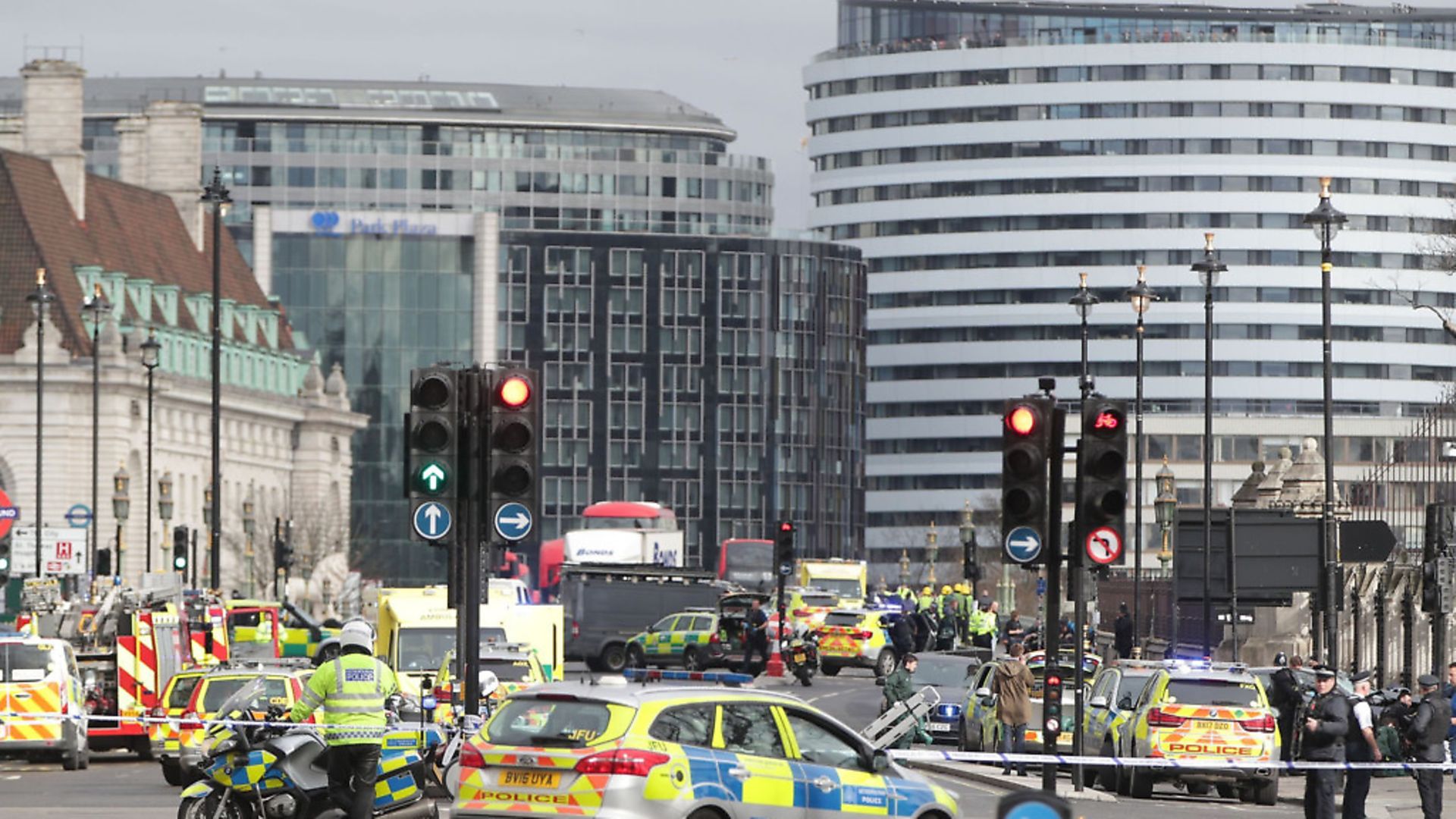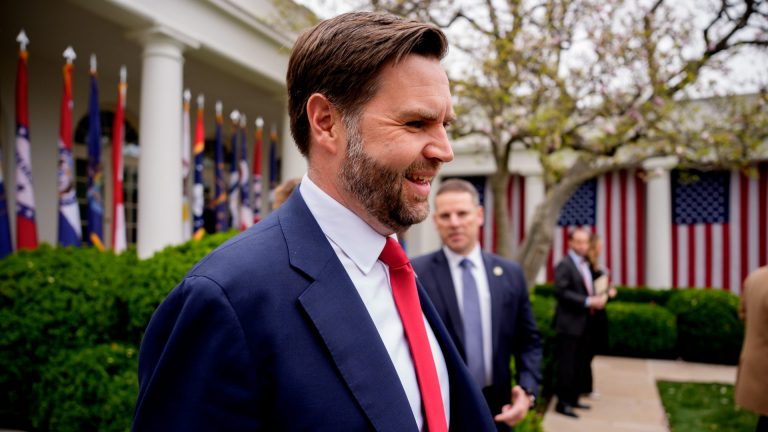
The attack on Westminster Bridge and the Houses of Parliament fits a pattern emerging across Europe: terrorism has gone low-tech, freelance and ever-harder to tackle
The terror attack in central London fits a familiar pattern – in more ways than one.
Not only did it sow fear on the streets of a major European city, but the subsequent response was one of a familiar, yet much-needed, spirit of resilience: parliament was in session on the following day, and Prime Minister Theresa May made a statement declaring ‘the forces of hate and evil’ would not prevail.
But, more ominously, it also fits a pattern of low-tech terrorism that is harder to counter than traditional violent campaigns, and – as with the most recent atrocities in France and Germany – indicates a change in the nature of the threat that now stalks our streets.
The Westminster attack came a year to the day after an Islamist cell set off three simultaneous bombs in the Belgian capital Brussels, killing 32 and injuring over 300.
Since then, however, terrorist attacks in Europe have been decentralised, often perpetrated by a single individual without access to a military arsenal. Contemporary attacks no longer require command structures or stockpiles of semtex and AK-47s.
‘These guys don’t need sophisticated equipment to carry out their death-dealing. They use tools anyone can get hold of, over the counter, like knives and cars,’ says author and counter-terrorism researcher Aaron Edwards.
France has been Europe’s ground zero for terrorism in recent years, starting with the assault on the offices of satirical newspaper Charlie Hebdo and on a kosher supermarket in January 2015, and continuing with the November 2015 attacks on diners in Paris restaurants and revellers at the Bataclan concert venue, and the 2016 Bastille Day massacre in Nice.
But through this period there have also been a number of other lower-level – though sometimes deadly – attacks, including several attempts to mow down pedestrians with vehicles, the stabbing to death of a police officer and his partner in their home, and the decapitation of a Catholic priest.
Even in the last few days, there has been a fresh eruption of violence in France, almost at background level. Much of it was not in fact Islamist terrorism – but all of it was chaotic and individualised.
On Thursday March 16, a disgruntled student attempted to shoot-up a high school in Grasse and a letter bomb, reportedly sent by Greek anarchists, exploded in the Paris offices of the International Monetary Fund. The next day, just streets away from my home in Paris, two men had their throats slit by a relative. The attacker was reportedly shouting about Islam.
A day later, a man now identified as Ziyed Ben Belgacem, walked into Orly airport and attempted to strangle a soldier and steal her rifle. He had earlier opened fire on police in the suburbs of the city and stolen two cars. He was shot dead in the airport terminal.
Ben Belgacem’s father has told reporters that his son was not motivated by politics or religion, but instead was out of his mind on alcohol and drugs. French investigators say toxicology tests carried out his body showed a high blood alcohol level as well the presence of cannabis and cocaine. Time will tell what his motives were, but investigators have ruled nothing out.
In many ways, the ongoing mystery about the nature of his precise motivations, almost a week on, demonstrates the changing nature of terror. We are no longer guaranteed the tidy conclusion of perpetrators pledging a clear allegiance and leaving behind a neat – however warped – justification for their actions.
We must wait to learn more about the Westminster attacker, but the recent events in France indicate the kind of individual involved in terrorism may be changing.
Edwards says that many have surprising backgrounds, especially as we now, hyper-vigilant about Islamist extremism, expect them to have deeply-held Salafist views. In fact, he says, they are often people living on the fringes of society, and their apparent cause can be a flag of convenience.
‘Primary motivations could be a domestic issue, many are involved in petty crime,’ he said.
‘Terrorism is a socially perverse activity, so they’re [almost certainly] bound to have been involved in other socially perverse activities.’
It often provokes fury, when analyses of terror attacks are perceived to play down links to Islamism. But, in reality, this is not necessarily a consequence of political correctness or squeamishness – it does seem to be increasingly the case that there is often more to these twisted minds than religion.
Pre-political terrorism
On Tuesday, Martin McGuinness, Northern Ireland’s former Deputy First Minster died. McGuinness, a senior figure in Irish republican party Sinn Féin had also been a member of the Irish Republican Army (IRA), a group which caused no end of mayhem in its three decade campaign against Britain.
In fact, the last significant attack on Westminster was by another Irish republican group, the Irish National Liberation Army (INLA), which killed Tory MP and war hero Airey Neave in a car bomb attack in 1979.
Today, Irish republicans seem like a relic from another era. Thankfully, today’s terrorists lack the sophistication that the IRA developed over the decades, but there is also another, more worrying, difference: the ease with which self-radicalised individuals can cause mayhem and spread fear. The old saw that ‘one man’s terrorist is another man’s freedom fighter’ no longer rings true, and recent attacks in Europe are reminiscent of scenes on the streets of Israel where people have been randomly stabbed and assaulted with the thinnest veneer of political justification.
McGuinness’s journey from gunman to statesman is unimaginable today precisely because of how the nature of terrorism has changed. Not only did the IRA have an identifiable goal, leaving room, however slight, for negotiation. It also viewed itself as a regular army.
Today, terrorists wield knives and drive vehicles into passers-by, and in the name of causes so unlikely as to beggar belief. In a very real sense their actions, unlike those of the IRA, African national liberation movements or Latin American guerrillas, have regressed to what might be called ‘pre-political’, because they express generalised grievances that cannot imaginably be addressed through political means. IRA atrocities were made no less horrific by the stated aims of Irish republicans, but they were driven by specific demands. By contrast, the marauders at work today have no strategy and are driven by inchoate rage.
Beyond questions of strategy, the tactics are also changing. After French and Belgian authorities broke-up the terror cells operating in their countries, terrorism has taken on a new form: it is low-tech and individualistic, seemingly driven as much by alienation and self-radicalisation as by achievable political demands.
As the British New York Times columnist Kenan Malik wrote last year: ‘In the past, groups employing terror, such as the IRA or the PLO, were driven by specific political aims — a united Ireland or an independent Palestine. There was generally a close relationship between the organisation’s political cause and its violent activities.’
Malik went on to say today’s jihadist killers had more in common with Munich shooter Ali David Sonboly, who described himself as ‘Aryan’, Norwegian neo-Nazi Anders Breivik and Thomas Mair, who murdered British MP Jo Cox, than they do with the explicit political actors of the past.
Sometimes, there is a degree of organisation and co-ordination behind their actions – such as with the November 2015 Paris attacks, or the Brussels bombings – sometimes there is not. But as the ‘lone wolf’ Berlin and Nice truck attacks show, you do not necessarily need much organisation to ensure a high death toll.
And the distinction between those who work in groups, and those ‘self-starters’ who operate alone should not be overstated. The former may offer the security services slightly more opportunity for detection, but they spring from the same swamp, are motivated by the same hatreds and perverted ideas, and come – mostly – from the same backgrounds. The ‘lone wolves’, after all, often tend to be not quite so solitary as they first seem.
And whether organised or not, the cumulative effect of such onslaughts is telling, and is seen most obviously in France. After the January 2015 Paris attack, France was outraged. Most of the world was, in fact. Ten months later, when the same city was targeted, there was a fresh defiance: France would not change its way of life. It was more short-lived, however: the next night a lightbulb exploded and there was mass panic. Those who has been sitting in cafés tweeting ‘Je suis en terrase’ bolted, stampeding in a mass panic.
The months that followed were a slow grind. Life goes on, but not quite as before. Somehow the sky seemed darker. The cafés were not empty – the côtes du rhône and Affligem beer still flowed nightly from cinq à sept – but there was a slight, yet noticeable, grim undercurrent to life. A sense of sadness mixed with a determination to remain resilient – sangfroid is probably an accurate, if charitable, description of the public mood. When French friends asked me how I felt about seeing armed soldiers on the streets I wryly replied that I was Irish and so I was used to it. And yet, the scale of the attacks dwarfed what I had witnessed in Ireland.
On July 13 the French government announced it would finally end the state of emergency that had been declared after the Charlie Hebdo attacks. A day later it was extended, and not capriciously: Mohamed Lahouaiej-Bouhlel, drove a truck onto the Promenade des Anglais in Nice, slaughtering 86 during the Bastille Day festivities. This time there was a very different sentiment in the air: anger.
This could be a question of character: I spend much of my time in Paris, which is very different to the south of France. The temperament of the people is more aggressive, and the politics are different, with the south long having been a National Front stronghold.
But as the attacks continue, they are becoming a fact of life in France, as they risk becoming in other European countries. The lone wolves, and those who operate in packs, walk amongst us.
Jason Walsh is a Paris-based reporter









